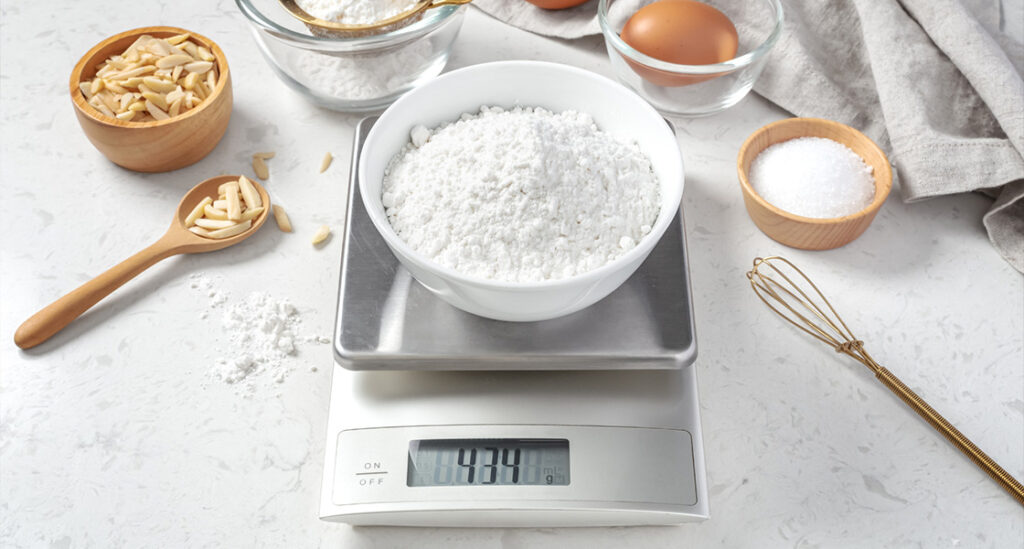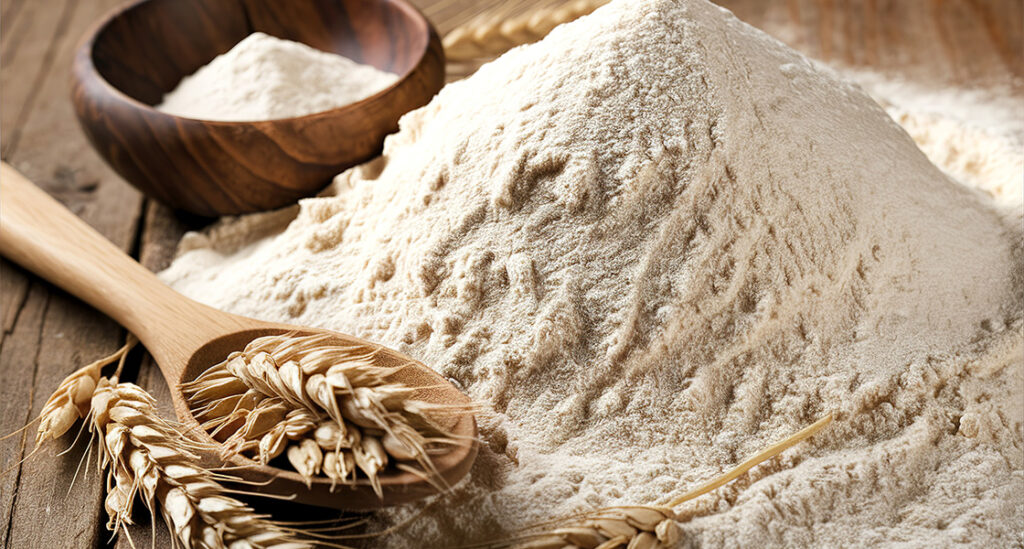Flour is the most essential ingredient for a baker, playing a key role in almost every single recipe. However, with so many types of flour lining supermarket shelves, how do you pick the best one for your recipe? To make an informed decision, focus on two critical factors: protein content and nutritional value.
When it comes to baking, the protein content of flour plays a pivotal role. Flour is milled with varying levels of protein, which influences its strength and gluten-forming potential. Higher content results in “stronger” flour, suitable for hearty breads, while lower levels yield “weaker” flour, ideal for delicate cakes. Matching this to your recipe’s needs is what ensures optimal texture and flavour.
Baking flour with higher protein levels, such as bread flour, are ideal for yeast-based recipes. These flours, typically containing 12-14% protein, provide the strength needed to support the rise of yeast doughs. This is what gives baked goods like bread, bagels, and pizza their chewy textures and substantial structures.
All-purpose flour, with its moderate amount of protein (8-11%), is a versatile baking flour suited for a wide range of recipes, such as cookies, muffins, and even local favourites like roti prata. It provides enough structure for simple breads while remaining gentle on batters for tender scones and biscuits.

Cake flour is a specialty flour with a low protein content (6-8%), making it a key ingredient for tender cakes with a fine crumb. Its reduced gluten-forming potential results in cakes that are soft and delicate, with a melt-in-your-mouth texture. When baking light, airy cakes such as chiffon, angel food, or sponge cakes, cake flour is the best choice for achieving the texture you desire.
For those looking to enhance the nutritional profile of their baked goods, here are some healthier flour options you should consider.

Made by milling the entire wheat berry, including the germ and bran, whole wheat flour is richer in fibre, vitamins, and minerals compared to refined flour, offering more nutritional value. Aside from its robust flavour and dense texture, whole grain flour improves dietary fibre intake, which supports better digestion and overall gut health. It also provides essential vitamins and minerals that are often lost in refined flours, making it a more nutritious baking flour choice.
Unlike bleached flour, which undergoes chemical treatments to whiten and age the flour, unbleached flour is processed naturally without the use of artificial ingredients. This helps retain more of the flour’s inherent nutritional value, including additional vitamins, minerals, and antioxidants. Plus, unbleached flour tends to have a slightly richer flavour and a denser texture, enhancing the taste and quality of your baked goods.
Selecting the right baking flour can make all the difference in the flavour and texture of your baked goods. So, the next time you reach for a bag of flour, take a moment to consider its unique properties and how it’ll impact your recipe.
At Prima Flour, we offer a diverse array of baking flours to suit every baking need and taste. As one of the pioneer flour millers in Asia, we are committed to delivering consistency and quality in every bag.
Contact us to learn more about what we offer today.